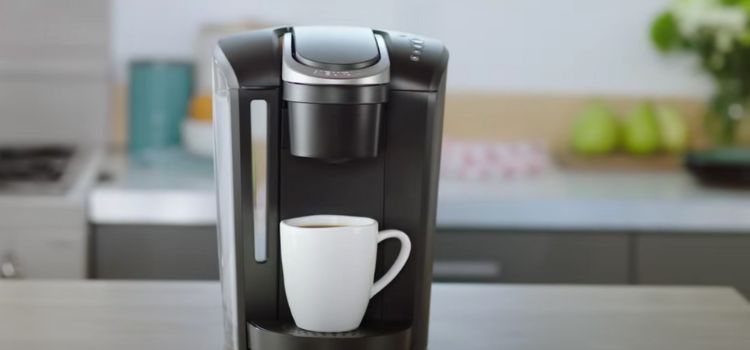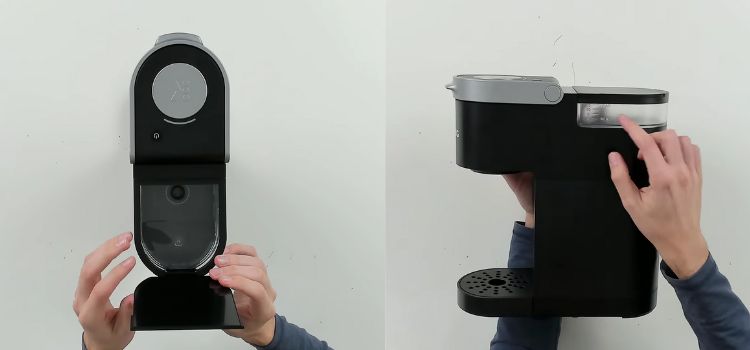As an Amazon Associate, I earn from qualifying purchases

Keurig machines have revolutionized the world of coffee brewing with their promise of quick, convenient, and individually brewed cups of coffee. For many, these machines embody the beauty of simplicity—just pop in a pod, press a button, and enjoy.
However, this seamless experience can be rudely interrupted when your Keurig starts to drip instead of delivering a full cup of coffee. The slow trickle can be a major frustration, especially during a rushed morning routine. This article explores the reasons behind this issue and offers practical solutions to restore your Keurig to its full glory.
Common Causes of Dripping in Keurig Machines
Clogged Needles
One of the most common culprits for a drippy Keurig is clogged needles. The needles in a Keurig machine puncture the coffee pod to allow water to flow through and extract the coffee. Over time, coffee grounds and debris can accumulate, blocking these needles and restricting water flow. You might notice inconsistent brewing speeds or weaker coffee if this is the issue.
The signs of clogged needles are usually subtle at first, with slow brewing being the primary indicator. If left unaddressed, the clogging can worsen, potentially leading to complete blockage.
Mineral Build-Up
Another prevalent issue affecting Keurig machines is mineral build-up. If you live in an area with hard water, mineral deposits can accumulate inside your coffee maker, particularly in the water lines and heating elements. This scaling can significantly impede the machine’s ability to pump water efficiently, resulting in the dreaded drip.
Apart from slow brewing, you might notice a change in the taste of your coffee or hear unusual noises from the machine. These are red flags indicating that your machine is suffering from mineral build-up.
Water Reservoir Issues
Sometimes, the problem is as simple as an incorrectly placed water reservoir. If the reservoir isn’t seated properly, it can lead to inadequate water flow, causing the machine to drip. Additionally, any cracks or faulty connections in the reservoir can disrupt the water supply.
To check for this, ensure that the reservoir is fully seated and that there are no visible damages. Even a slightly misaligned reservoir can affect the brewing performance.
Troubleshooting Tips

Needle Cleaning
Cleaning the needles is a straightforward process that can save your Keurig from slow brewing woes. Here’s how you can do it:
- Turn off and unplug your Keurig to ensure safety.
- Remove the pod holder and use a paperclip to gently clear any debris from the entrance and exit needles.
- Rinse the pod holder with warm water to remove any loose grounds.
- Reassemble the machine and conduct a test brew with just water to ensure proper flow.
Regularly cleaning the needles can prevent clogs and maintain optimal brewing performance.
Descaling the Machine
Descaling is crucial for removing mineral build-up and should be done every three to six months, depending on water hardness.
- Empty the water reservoir and fill it with a descaling solution or a mixture of equal parts vinegar and water.
- Run the solution through the machine in a few brewing cycles without a pod.
- Rinse by brewing several cycles with fresh water to remove any residual vinegar taste.
Following these steps will help keep your Keurig running smoothly and your coffee tasting great.
Water Reservoir Checks
Ensuring that the water reservoir is correctly seated can often resolve dripping issues.
- Remove and reseat the reservoir, making sure it’s aligned properly with the machine.
- Check for any cracks or leaks and replace the reservoir if necessary.
- Ensure that the reservoir is filled to the required level.
A well-seated reservoir ensures a consistent water supply for brewing.
Maintenance Advice
Regular maintenance is the key to a long-lasting Keurig machine. Here are some tips to incorporate into your routine:
- Clean the exterior and drip tray regularly to prevent build-up of coffee stains.
- Replace the water filter every couple of months to ensure clean and fresh-tasting coffee.
- Perform needle cleaning and descaling as part of your regular maintenance schedule.
By keeping up with these maintenance tasks, you can prevent many common issues and enjoy a hassle-free coffee experience.
When to Seek Professional Help
Sometimes, despite your best efforts, the problem might persist, indicating a deeper issue. If your machine continues to drip after trying all the troubleshooting steps, it might be time to seek professional help. Electrical faults or complex mechanical issues often require a technician’s expertise.
Check if your Keurig is still under warranty. If so, you can contact the manufacturer for support or repair services. If not, look for reputable appliance repair services that specialize in coffee machines. A qualified technician can diagnose and fix problems that might be beyond DIY solutions.
Conclusion
Facing a drippy Keurig can be an annoying start to your day, but with the right knowledge and approach, you can tackle this problem head-on. By understanding the common causes like clogged needles, mineral build-up, and water reservoir issues, you can implement effective solutions and maintenance practices to keep your machine in top condition.
Regular cleaning, descaling, and careful attention to the water reservoir can go a long way in ensuring your Keurig brews efficiently. Remember, addressing minor issues promptly can prevent bigger headaches down the line. With these strategies, you can continue to enjoy the convenience and delight of your Keurig coffee maker for years to come.
FAQ
Why is my Keurig dripping so slowly?
If your Keurig is dripping slowly, it might be due to clogged needles from coffee grounds or mineral build-up from hard water. Regular cleaning and descaling can help restore optimal flow. Ensure the water reservoir is properly seated and filled to prevent any interruption in brewing.
Why does my Keurig only drip a little water?
A Keurig that drips minimal water could have clogged needles or a misaligned water reservoir. Check for blockages in the needles and ensure the reservoir is correctly positioned. Descaling the machine can also help by removing internal mineral deposits that hinder water flow.
Why is my Keurig Slim so slow?
A slow Keurig Slim might have clogged needles, mineral build-up, or a partially filled water reservoir. Regularly clean the needles and descale the machine to improve performance. Ensure the water reservoir is full and properly seated to facilitate a smooth brewing process.
Why is Keurig coffee watery?
Watery Keurig coffee can result from using incorrect pod sizes or clogged needles affecting water flow and extraction. Ensure you’re using compatible pods and check the machine for any blockages. Regular maintenance, including cleaning and descaling, can enhance the strength and flavor of your coffee.
As an Amazon Associate, I earn from qualifying purchases